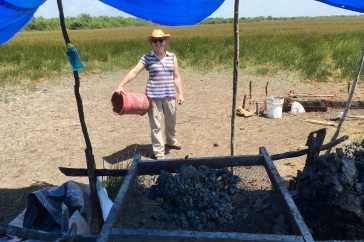
Recently, former St. Paul’s School senior Owen Labrie, accused of raping a younger student, was convicted of misdemeanor charges of having sex with a girl below the age of consent (but acquitted of felony sexual assault charges). The trial shed a harsh light on the elite Concord prep school and its “senior salute.” UNH Today asked researchers Sharyn Potter, Katie Edwards and Caroline Leyva of UNH’s Prevention Innovations Research Center, a program at the forefront of campus sexual assault prevention, for perspective.
UNH Today: Prevention Innovations has evaluated and implemented bystander prevention strategies. What role could — or should — bystanders have played in this crime?
Potter: The St. Paul’s community could have examined the “tradition” of the senior salute as a practice that objectifies women and reiterates the larger cultural notions that parts of women are things to “collect” and “count.” More specifically, faculty, staff and students had multiple opportunities to intervene in this particular crime. The hall mates who knew of their friends’ participation in senior salute could have questioned their friends’ practices or reported it to a residence hall manager.
When we ask members of the community to engage as a bystander we are not asking them to put on a Superman cape. We are asking them to safely, proactively engage in a situation that looks suspicious. These actions can be as unobtrusive as subtly texting 911 on a phone or turning the lights on or the music off at a party.
Edwards: Bystanders knew about Labrie’s plans to “slay” the victim, yet they did nothing about it. The victim’s friends urged her to meet with Labrie. Students knew about what happened prior to Labrie’s arrest. Of course, Labrie is responsible for his actions, but bystanders are also responsible for their inaction in this situation. There are effective bystander-based prevention programs for students, yet they are not widely used at schools across the United States. Perhaps this case will be a catalyst to change that.
Leyva: Youth are especially vulnerable to the desire to be a member of the “it” crowd. Swimming against the current does not come easily. However, there are always a few who swim against the tide in the “coolest” of ways. They are the group leaders, the team captains, maybe even the renegades with that “it” factor who draw and compel others to follow. These are the students we must engage in bystander prevention efforts. They have the potential to enact dynamic shifts of thinking around power and privilege and its uses. If just one senior male with that “it” factor questioned the senior salute, others likely would have followed — not necessarily because they are thinking along the same lines or even due to empathy but because of the desire to swim with the current.
UNH Today: What misperceptions or myths does a high-profile trial like this reveal?
Edwards: In this case, the Labrie defense relied on several common misperceptions about rape. Among them is the myth that girls lie about rape, especially when it ends up being regretted sex. However, decades of methodologically conducted research suggest that just 2 to 8 percent of rapes are unfounded. The vast majority of men and women who report being raped are telling the truth.
It’s also a myth that if an alleged victim does not “resist enough” it is not really rape, when in fact, no means no. Further, people respond to sexual assaults in a variety of ways, including denial, which can serve as a short-term protective coping mechanism. The bottom line here is that there is no “right” way to act during or after a sexual assault.
This trial also exposed the “good kids do not commit sexual assault” myth. The vast majority of perpetrators are not strangers hiding in bushes or deranged sociopaths. They are often well-liked, successful individuals who succumb to peer pressure and social and community norms accepting of sexualized violence. Yet, they still must be held accountable for their actions.
UNH Today: Are there ways we can better support victims in cases like this one?
Potter: The criticism and lack of support faced by most victims can bar or discourage them from coming forward; the majority (64-96 percent) of victims of sexual and relationship violence and stalking do not bring the crime to the attention of legal authorities. It is really important that we acknowledge the victim’s decision to disclose this crime to her family and bring the crime to the attention of her school and legal authorities. Her actions signal to other victims the importance of seeking help and reporting crime committed against them.
Schools need policies that support the ability of a victim to come forward and institutional response strategies that support victims. As friends, faculty and administrators, we need to support a person who discloses to us with actions (offering to take the victim to the rape crisis center, hospital or police) and language. An empathic statement like “I believe you” or “I am sorry this happened to you” can change the way a victim views and makes decisions on how to move forward in the aftermath of the crime.
Edwards: When thinking about the outcome of this case, we should remember that survivors who come forward are often blamed, questioned and humiliated for what happened to them. People and communities have a responsibility to do something to prevent sexual violence and to support and believe survivors — we all have a role to play.
Sharyn Potter is Prevention Innovations co-director and associate professor of sociology. Katie Edwards is Prevention Innovations research and evaluation consultant and assistant professor of psychology and women’s studies. Caroline Leyva is Prevention Innovations lead training and curriculum development specialist.
-
Written By:
Beth Potier | UNH Marketing | beth.potier@unh.edu | 2-1566

















































